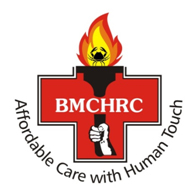What happens before the surgery?
A multidisciplinary team comprising of oncosurgeon, medical oncologist, anesthesiologist, intensivist, radiologist and pathologist will evaluate the patient. Pretreatment records will be checked carefully with histological confirmation by an experienced histopathologist. Pathology review and an assessment of the invasive or non-aggressive nature of a malignancy will be done for planning treatment. Imaging studies will be done to rule out extra-abdominal disease.
Patient and relatives will be counseled initially regarding therapy, expected response with same, prognosis and expected cost of treatment. Risks involved and quality of life issues will be explained by Dr. Naresh Need for systemic chemotherapy if required will be explained beforehand.
Patient will be given nutritional assessment and support and will be asked to abstain from smoking/alcohol and other addictions. The patient might be asked to discontinue NSAIDS, anticoagulants and systemic chemotherapy at least 6 weeks prior to surgery. Preoperative exercise like stoma counseling & marking will be done in an upright position.






